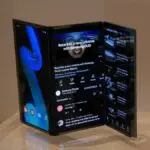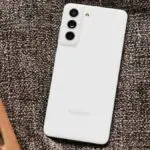
I carried an iPhone 4 for over two years. The Note II on my desk is my second Android device, the first being a Nexus One. Deep at heart though, I’m a huge Nokia fan. It’s a shame that the company decided to bet the farm on Windows Phone instead of going with Android, but I’m not here to talk to you about that today. What I want to talk about is photography.
Most people, myself included, almost never take the camera off auto mode. There’s absolutely nothing wrong with that, at least in my opinion. Sure, I’ll manually switch to macro mode at times, I’ll take an HDR photo once or twice a month, but for the most part I’m on autopilot. Apple knows this, which is why their camera UI is stark. There’s a button to take a photo, a button to switch to the front facing camera, a button to switch to video recording mode, and that’s pretty much it.
Samsung on the other hand, they took the user interface of the Galaxy Camera and slapped it into the GS4. It has more shooting modes than you can count, many of which are genuinely useful, but unless you manually switch to that specific shooting mode before capturing a photo, you’re screwed.
Which brings me to the Nokia Lumia 925 that was just announced. It does something that seems so obvious I’m left in total shock as to why it wasn’t done before. There are two camera apps on the device, the regular one that takes snaps, and then there’s the Nokia “Smart Camera” app.

Unlike the GS4, where you need to think about what type of photo you want to take, the Smart Camera application snaps 10 photographs and then lets you pick whatever effect you want to use. Did someone walk in front of the camera? Use “eraser mode” to fix it. Did someone do a really cool trick on their bike? Use the “action shot” mode to splice individual frames. Taking a photo of your family and your mom or dad blinked? Use the mode that lets you swap their face with a photo that has their eyes open.
Put another way, Nokia expects you to do some light post-processing on their device, whereas Samsung wants you to fiddle with a bunch of shooting modes until you find the one you think you need before snapping a photo.
Nokia nailed this one in my book, and I hope the GS5 steals some of the 925’s imaging prowess. I ultimately want Nokia to eventually switch to Android, but that’s a whole other story for another day.









